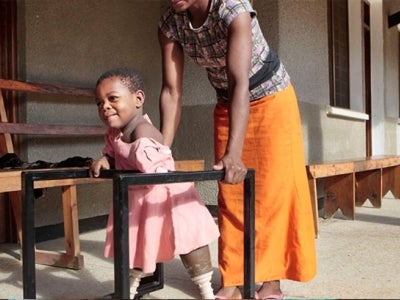
The synergies between GEF and FAO priorities, and the importance of sustainable agriculture to our member countries, have resulted in the rapid growth of this partnership.
Editor's note: This story is part of the publication produced for the 25th Anniversary of the Global Environment Facility. The publication is a compilation of contributions from across the GEF partnership; it includes stories and guest articles that have being submitted by countries, partner organizations and dignitaries from around the world.
As the Global Environment Facility (GEF) marks its 25th anniversary, the Food and Agriculture Organization of the United Nations (FAO) celebrates more than 20 years of partnering with it on country-driven investments in the critical nexus between agriculture and the environment. The synergies between GEF and FAO priorities, and the importance of sustainable agriculture to our member countries, have resulted in the rapid growth of this partnership.
The GEF-6 programme gives more prominence than ever to agriculture, forestry, fisheries and land-use including food security, and to livelihood resilience, as these relate to critical environmental issues, such as climate change, biodiversity and land degradation. FAO looks forward to enhancing this collaboration through the GEF 7.
The GEF’s unique model of working through partner agencies leverages and adds value to FAO’s agriculture focus for the benefit of developing countries and countries in transition.
During the GEF’s first 25 years, the environment has evolved from a fringe issue to a fully mainstreamed part of the development agenda. This trend is also reflected in FAO’s work to end hunger and malnutrition, as this can only be done in an environmentally sustainable manner. As the world’s population approaches the 9 billion mark, it is even more urgent and imperative.
Looking forward, FAO sees sustainable food and agriculture as an over-arching approach centered around five principles:
* Improving efficiency in the use of resources, including natural resources. For example, improving agricultural practices can have direct environmental benefits related to climate change, land and water condition, and biodiversity;
* Directing action to conserve, protect and enhance natural resources. Food and agricultural production depends on natural resources, and therefore the sustainability of production depends on the sustainability of the resources themselves;
* Protecting rural livelihoods and improving equity and social well-being, ensuring that producers have adequate access to, and control of, productive resources and addressing the gender gap;
* Enhancing the resilience of people, communities and ecosystems in the face of climate change and other pressures; and,
* Ensuring good governance for the sustainability of both the natural and human systems.
This approach recognizes that biodiversity and ecosystems (including agricultural landscapes and seascapes), and the ecosystem services these provide, should be protected and managed, in order to optimize their contribution to agricultural production. This contributes to achieving the dual benefits of environmental protection and food security-- the benefits that FAO strives to provide to its member countries, through policy and actions.
FAO recognizes that biodiversity is essential for food security. Thousands of interconnected species make up a vital web of biodiversity in ecosystems upon which global food production depends. With the erosion of biodiversity, we lose the potential to adapt agricultural production systems to new challenges like population growth and climate change. Sustainable food and agricultural practices increase the resilience of agricultural communities and ecosystems, while mitigating climate change.
Worldwide, FAO’s country-driven partnership with the GEF puts these issues front and center. Consider the following examples: In East Africa, the partnership enabled the four countries who share the Kagera River basin to apply integrated ecosystem approaches to manage land resources and improve agricultural production, food security, and rural livelihoods. In Myanmar, we are helping small farmers to apply more sustainable agricultural practices, with the goal of improving yields and land condition, reducing both greenhouse gas emissions, and pressure on nearby forests and mangroves. Around the world - from Peru, to Mexico to the Philippines - the partnership is helping small farmers sustain the dynamic process of in-situ conservation of plant genetic resources. And in the Bay of Bengal, the FAO-GEF partnership is helping littoral countries to better manage their shared resources and promote sustainable fisheries. The partnership is also working in the global commons, to promote efficient and sustainable management of fisheries, resources and biodiversity conservation in “areas beyond national jurisdiction”.
FAO is ready to improve and increase our work with the GEF and partners to offer innovative and integrated solutions for these vital issues and to maximize synergies among the critical environment and sustainable development goals going forward.

